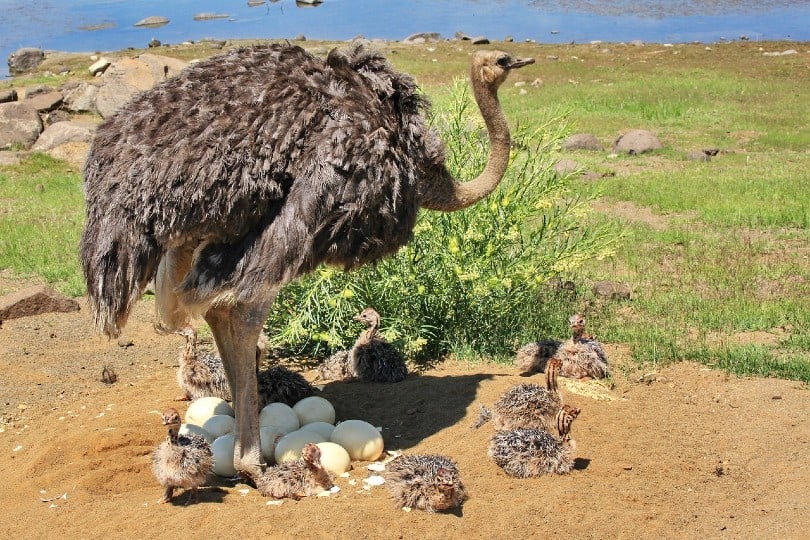Ostriches are omnivores so they eat a combination of meat and plants, but they also eat sand and small stones to aid with digestion and because these flightless birds do not have teeth. They can be fed a commercial ratite food in captivity, although this can be supplemented with other foods, while wild ostriches would eat flowers and fruits as well as some insects, tortoises, and lizards. Typically, they prefer to eat plants but will eat meat protein if the opportunity arises.

About Ostriches
The ostrich is the world’s largest bird. It is a ratite, which means that it is a flightless bird and joins the likes of emus and cassowaries. Like other flightless birds, ostriches have long legs, and in the wild they live on African plains and woodlands. They share their habitat with a host of predators and have a very keen sense of sight. They are capable of running at speeds of up to 70kmh: not quite as fast as a lion or wildebeest but faster, for example, than a hyaena. They have a strong kick that has been known to kill young lions, and they can be aggressive when protecting their nest and young.
What Do Ostriches Eat In The Wild?
In the wild, ostriches prefer to eat flowers, roots, and some fruits. However, they will also eat a range of different insects, some small tortoises, and lizards. Because this species of flightless bird has no teeth, they also consume sand and small stones, which are used to grind down food.

Captive Diet
In some parts of the world, ostriches are farmed for their eggs and their meat. As such, commercial ostrich feed is available and so too is commercial ratite food. These contain the vitamins and minerals necessary to keep the ostrich healthy and well fed, combined with sand or grit to help grind food down.
Hatchlings And Chicks
Hatchlings and young chicks need more protein than adult ostriches. Commercial food should contain a minimum of 25% protein at this stage. Up to the age of three weeks, the chicks can be given constant access to food so that they can eat as much as they like. Between three and weight weeks, they should be given as much as they can eat in 20 minutes, twice a day. If your chicks are refusing or turning away from food, try placing them with chicks that are eating and this may encourage them.

Adults
Adults are fed twice a day and are given commercial feed because it contains the vitamins and minerals an ostrich requires in its daily diet. This can be supplemented with additional fruits and vegetables, but these should only make up a maximum of 20% of their diet. Vegetables you can feed include beets and carrots but leafy greens and large pieces of vegetable can get stuck in the long throat of the ostrich so the produce should be cut into suitably small pieces before feeding.

Conclusion
Ostriches are the world’s largest bird. They produce the world’s largest bird egg, and they are one of a small number of flightless birds. They are omnivores, which means they eat a combination of plant and meat foods, but because they are farmed around the world, you can buy commercial feeds that include all necessary vitamins and minerals for the species. These can be supplemented with fresh fruit and vegetables, making up to a maximum of 20% of their diet and chopped into small enough pieces to avoid causing an obstruction in their throat. Although ostriches can get a lot of the moisture they need from their diet, you should provide between one and two gallons of fresh drinking water per day, to ensure that they are well hydrated.
See also: What Species Is the Closest Living Relative to Dinosaurs?
Featured Image Credit: Wirestock Creators, Shutterstock
